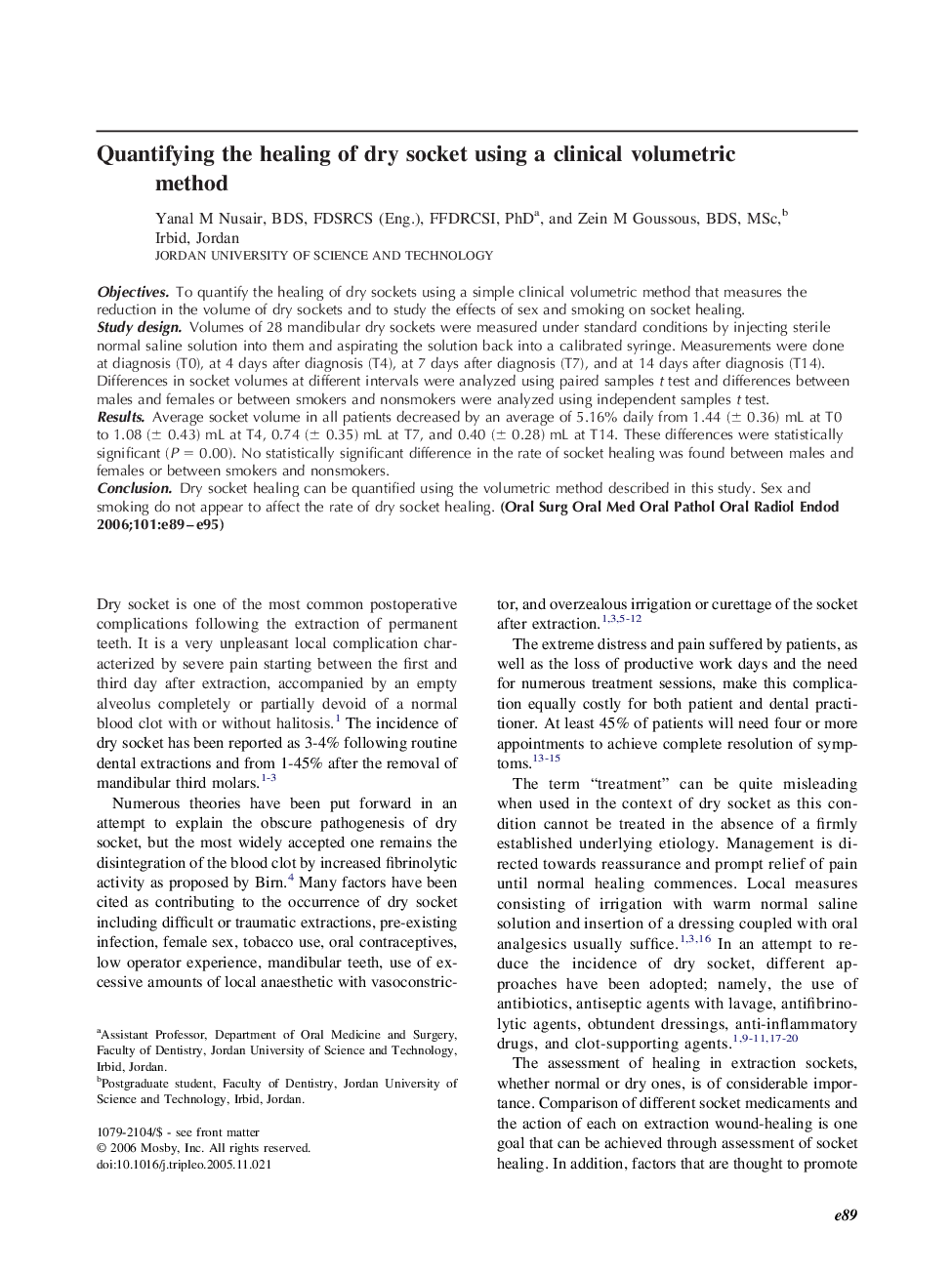| Article ID | Journal | Published Year | Pages | File Type |
|---|---|---|---|---|
| 3169958 | Oral Surgery, Oral Medicine, Oral Pathology, Oral Radiology, and Endodontology | 2006 | 7 Pages |
ObjectivesTo quantify the healing of dry sockets using a simple clinical volumetric method that measures the reduction in the volume of dry sockets and to study the effects of sex and smoking on socket healing.Study designVolumes of 28 mandibular dry sockets were measured under standard conditions by injecting sterile normal saline solution into them and aspirating the solution back into a calibrated syringe. Measurements were done at diagnosis (T0), at 4 days after diagnosis (T4), at 7 days after diagnosis (T7), and at 14 days after diagnosis (T14). Differences in socket volumes at different intervals were analyzed using paired samples t test and differences between males and females or between smokers and nonsmokers were analyzed using independent samples t test.ResultsAverage socket volume in all patients decreased by an average of 5.16% daily from 1.44 (± 0.36) mL at T0 to 1.08 (± 0.43) mL at T4, 0.74 (± 0.35) mL at T7, and 0.40 (± 0.28) mL at T14. These differences were statistically significant (P = 0.00). No statistically significant difference in the rate of socket healing was found between males and females or between smokers and nonsmokers.ConclusionDry socket healing can be quantified using the volumetric method described in this study. Sex and smoking do not appear to affect the rate of dry socket healing.
